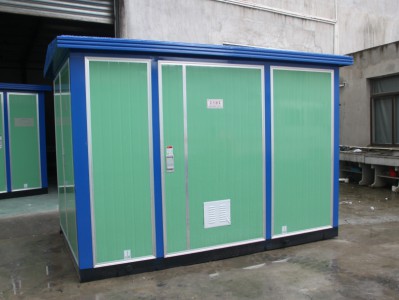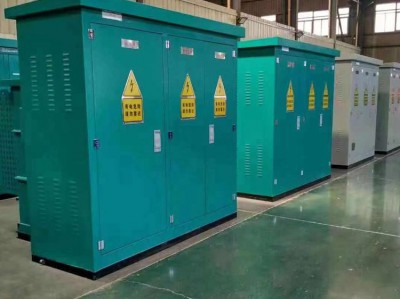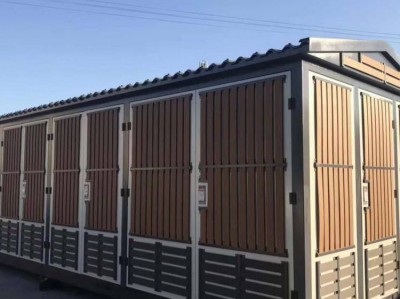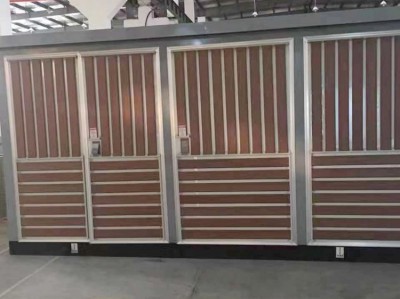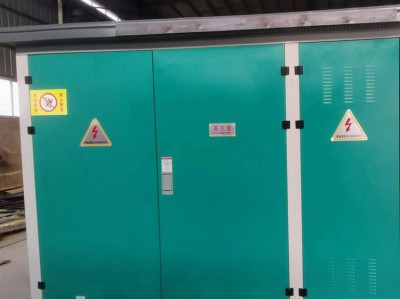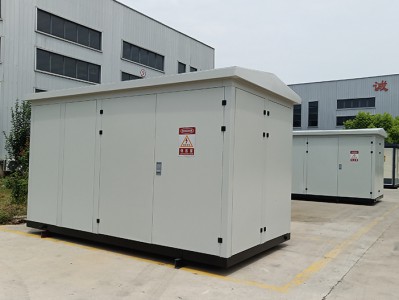Container substations for post-earthquake Myanmar
Product description
 In the post-earthquake reconstruction of Myanmar, the selection and deployment of container substations need to take into account rapid response, seismic performance, and environmental adaptability. The following provides a systematic solution from three dimensions: technical selection, application scenarios, and implementation strategies, combined with Myanmar's electricity standards and disaster characteristics:
In the post-earthquake reconstruction of Myanmar, the selection and deployment of container substations need to take into account rapid response, seismic performance, and environmental adaptability. The following provides a systematic solution from three dimensions: technical selection, application scenarios, and implementation strategies, combined with Myanmar's electricity standards and disaster characteristics:
I. Technical Selection: Four Core Indicators
1. Seismic Design
- **Structural Strengthening**: Adopt a combined structure of double-channel steel frame + shock absorber. For example, the **NXR-630G** model has passed the IEC 62271-202 seismic test and can withstand a magnitude 9 earthquake. Spring dampers are installed at the bottom, which can absorb 80% of the seismic energy.
- **Component Reinforcement**: The transformer is fixed with a double method of hoop + lock nut, and the busbar is connected flexibly, which can withstand an acceleration of ≥ 0.5g.
2. Environmental Adaptability
- **Protection Level**: IP65 dustproof and waterproof design, suitable for flood situations during the rainy season in Myanmar (such as the Irrawaddy Delta) and dusty environments (such as the Mandalay Industrial Zone).
- **Temperature Control**: An intelligent temperature control system is built-in. When the internal temperature is > 45°C, the axial flow fan will be automatically started, and it can operate stably under the high temperature of 40°C in Yangon.
3. Rapid Deployment
- **Modular Design**: For example, the fifth-generation folding photovoltaic container of Shanghai Huijue can be unfolded within 15 minutes and support the power supply of 50 medical tents.
- **Mobility**: Equipped with electric telescopic rods and universal wheels, it can be moved by a tractor on muddy roads, which is suitable for the complex terrain in the disaster area.
4. Energy Integration YouTube:https://youtube.com/shorts/zBw-TuKuceY
- **Photovoltaic Energy Storage**: Integrate the solar panel + lithium battery system. In areas with sufficient sunlight such as Bagan, the average daily power generation can reach 30kWh, meeting the basic needs of temporary hospitals.
- **Hybrid Power Supply**: Support the interface of diesel generators, which can be used as a backup power source before the power grid is restored to ensure 24-hour power supply.
II. Application Scenarios: Three Typical Requirements
1. Medical Rescue
- **Configuration Scheme**: 1 **NRE8-100G** container substation (100kVA) + 5 groups of photovoltaic panels (total power 10kW), which can support 5 ventilators, 10 patient monitors, and lighting equipment.
- **Case Reference**: After the earthquake in Myanmar in 2025, the photovoltaic container of Shanghai Huijue achieved power supply within 15 minutes in the disaster area of Sagaing Region, ensuring the operation of 200 devices.
2. Temporary Resettlement Sites
- **Capacity Calculation**: According to a load of 3kW per household, a resettlement site for 100 households requires a 300kVA container substation. The **NR4-315G** model is recommended, which supports 10kV/0.4kV voltage conversion.
- **Expansion Capacity**: Reserve 40% redundant capacity to meet the connection of newly added lighting, water pumps, and other equipment in the future.
3. Infrastructure Reconstruction
- **High-voltage Access**: Adopt **NXR-630G** (630kVA), which supports a high-voltage input of 230kV and can be directly connected to the Myanmar national power grid.
- **Intelligent Monitoring**: Equipped with a Modbus RTU interface, it can monitor the load and faults in real-time through the Internet of Things platform, reducing the need for manual inspections.
III. Implementation Strategies: Five Key Steps
1. Supplier Selection
- **Local Cooperation**: Give priority to Sino-Myanmar joint ventures such as Yunnan Tongbian Electric Appliance (YNTC). Their products have passed the Myanmar MEB certification, and there is a storage center in Mandalay.
- **International Brands**: If high-end models are required, the ABB Safe-T-Plus series can be considered. Its seismic performance meets the requirements of a seismic intensity of 9 degrees in Myanmar.
2. Transportation and Installation
- **Land Transportation**: Use heavy-duty trucks (such as Sinotruk HOWO) and be equipped with anti-skid chains. When crossing the mountainous areas of Rakhine State, local guides need to be hired.
- **Rapid Installation**: Adopt prefabricated foundations. The hoisting error of the container substation is controlled within ±5mm, and the wiring and debugging can be completed within 3 hours.
3. Operation and Maintenance Support
- **Spare Parts Stockpiling**: Set up spare parts warehouses in Yangon and Mandalay, and stockpile vulnerable parts such as fuses and contactors to ensure that faults can be repaired within 24 hours.
- **Remote Monitoring**: Deploy the **NRE8-E** series, and issue real-time warnings through the cloud platform. For example, when the winding temperature is detected to be > 100°C, an alarm will be automatically triggered.
4. Compliance Certification
- **Mandatory Standards**: It is necessary to pass the **MS 151-2024** certification of the Myanmar Electric Power Enterprise (MEB), including seismic, fireproof, and EMC tests.
- **Environmental Protection Requirements**: Adopt SF6-free gas switches, which comply with the restrictions on greenhouse gas emissions in Myanmar's Environmental Protection Law.
5. Cost Optimization
- **Photovoltaic Replacement**: In areas with sufficient sunlight such as Kyaukpyu, using photovoltaic container substations can reduce fuel costs by 30%, and the investment can be recovered within 5 years.
- **Leasing Model**: Cooperate with the Myanmar Investment Commission (MIC) and adopt the BOOT model (Build-Own-Operate-Transfer) to relieve the initial financial pressure.
IV. Risk Response: Solutions to Three Major Challenges
1. Geological Disasters
- **Reinforcement Measures**: In earthquake-prone areas such as Rakhine State, the foundation depth of the container substation needs to reach 3 meters, and the bored pile + reinforced concrete structure is adopted.
- **Emergency Plan**: Equip with portable generators to provide temporary power supply when the container substation is damaged, ensuring the operation of medical equipment.
2. Security Threats
- **Anti-theft Design**: The box body is made of 3mm thick steel plate, equipped with an electronic lock and a vibration sensor. Cameras need to be installed in key places such as data centers.
- **Armed Escort**: In conflict areas such as Kachin State, hire local security companies to ensure the safety of equipment transportation and operation and maintenance.
3. Technical Barriers
- **Localized Training**: Cooperate with Yangon Institute of Economics (YIE) to carry out operation and maintenance training for container substations, and train 50 local technicians per project.
- **Technology Transfer**: Introduce the **TB-Box** technology of TBEA Co., Ltd. in China and set up an assembly factory in Myanmar to reduce equipment costs.
V. Reference of Typical Cases
| Project Name | Location | Configuration Scheme | Effect |
| Sagaing Medical Station | Sagaing Region | 1 NRE8-100G container substation + 10kW photovoltaic panels | Completed deployment within 15 minutes, supported the operation of 200 devices, and the misoperation rate was < 1% |
| Yangon Resettlement Site | Yangon | 3 NR4-315G container substations (operating in parallel) | Met the power supply needs of 1000 households and saved 200,000 US dollars in electricity bills annually |
| China-Myanmar Border Power Grid | Kachin State | NXR-630G + 230kV high-voltage access | Connected to the Myanmar national power grid, reducing transmission losses by 15% |
Through the above technical solutions and implementation strategies, the power supply can be quickly restored after the earthquake in Myanmar, and at the same time, sustainable energy support can be provided for long-term reconstruction. It is recommended to give priority to suppliers with localized service capabilities and combine photovoltaic technology to enhance the system's resilience to ensure stable operation in extreme environments.

